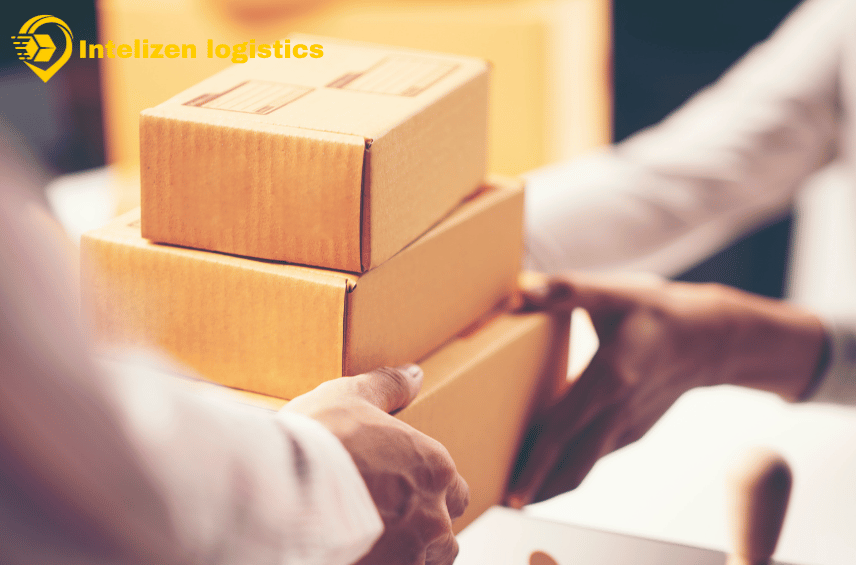Shipping has become the backbone of global commerce. Whether it’s an online purchase, industrial supply, or cross-border package, customers today expect speed, safety, and accuracy. At the heart of this expectation lies end-to-end shipping a process designed to ensure reliability from the moment a parcel is picked up until it reaches the customer’s doorstep.
In this article, we’ll explore how end-to-end shipping works, why it matters, and the systems that keep it dependable. We’ll also look at the role of pickup to delivery services, logistics tracking, and delivery workflows in ensuring customer satisfaction.
The Basics of End-to-End Shipping
End-to-end shipping refers to the complete movement of goods across the supply chain without gaps or disruptions. Instead of managing each stage separately, businesses rely on an integrated process from initial pickup through sorting, transportation, and final delivery.
This model eliminates delays, reduces errors, and ensures customers know exactly where their order is at every stage. By streamlining the delivery workflow, companies can offer a consistent experience while building trust.
Key Factors That Ensure Reliability in End-to-End Shipping
1. Efficient Pickup to Delivery Services
The shipping journey starts with the pickup. A reliable carrier ensures goods are collected on time, properly packed, and documented. Missing this first step often causes cascading delays.
Once picked up, a carefully managed pickup to delivery system ensures that the parcel follows the fastest, safest, and most cost-effective route. Modern providers use digital tools to optimize routes and reduce handling errors.
2. Real-Time Logistics Tracking
Transparency is one of the strongest drivers of customer satisfaction. With logistics tracking, businesses and customers can monitor every stage of the journey.
From warehouse scans to last-mile updates, tracking provides visibility that reduces anxiety and improves accountability. For example, if weather delays occur, both the company and customer are notified immediately.
3. Streamlined Delivery Workflow
The delivery workflow is the backbone of shipping operations. It includes:
- Sorting at warehouses
- Transportation planning
- Customs clearance (for international shipments)
- Last-mile delivery scheduling
A smooth workflow means fewer chances of bottlenecks, lost parcels, or delays. Automation tools now play a major role here, ensuring packages move through each stage with minimal human error.
4. Technology and Automation
Modern shipping depends heavily on digital tools. Artificial intelligence helps in route optimization, while automation ensures that shipments move through warehouses faster.
For example, scanning systems and barcode automation reduce misplacement risks, making end-to-end shipping more precise.
5. Customer Communication
Reliability is not only about the package it’s also about keeping the customer informed. SMS alerts, email updates, and live maps ensure transparency. If customers know where their package is, they’re less likely to feel dissatisfied.
Benefits of End-to-End Shipping
- Consistency: Integrated systems reduce the risk of delays.
- Cost Savings: Fewer errors mean reduced claims and reshipments.
- Customer Trust: Real-time logistics tracking boosts confidence.
- Global Scalability: Businesses can serve international markets seamlessly.
- Efficiency: Optimized delivery workflows ensure speed and accuracy.
Why Reliability Matters in Shipping
Reliability isn’t just about speed it’s about accuracy and confidence. Customers want to know that when they click “buy” the product will arrive when promised. For businesses, reliable end-to-end shipping creates repeat customers, reduces complaints, and strengthens brand reputation.
Imagine ordering a laptop online. If the shipment gets lost mid-transit due to poor logistics tracking, both the customer and business lose money and trust. That’s why every stage in shipping must work together seamlessly.
How Businesses Can Strengthen Shipping Reliability
- Partner with trusted carriers that specialize in pickup to delivery solutions.
- Invest in end-to-end shipping software for better route planning.
- Use advanced tracking systems to provide transparency.
- Regularly audit the delivery workflow to identify bottlenecks.
- Train staff to handle fragile or urgent shipments with care.
Conclusion
In today’s fast-paced world, end-to-end shipping is more than just a logistics solution it’s a promise of reliability, trust, and customer satisfaction. From efficient pickup to delivery systems to robust logistics tracking and optimized delivery workflows, every step plays a vital role in ensuring packages reach the right place at the right time.
For businesses, investing in reliable shipping systems isn’t optional it’s essential for growth. And for customers, it means peace of mind knowing that their order will always arrive safely, right at their doorstep.
Book your shipment today – fast, reliable end-to-end shipping solutions
Frequently Asked Questions (FAQs)
1. What is end-to-end shipping, and why is it important?
End-to-end shipping is the complete movement of goods from pickup to doorstep without breaks. It ensures reliability, efficiency, and transparency in the delivery workflow.
2. How does logistics tracking improve customer satisfaction?
Logistics tracking provides real-time updates on package movement. Customers feel confident knowing where their order is, reducing anxiety and building trust
3. What role does pickup to delivery play in reliability?
A strong pickup to delivery system ensures parcels are collected on time and delivered without delays. It sets the foundation for smooth end-to-end shipping.
4. Does automation improve end-to-end shipping?
Yes, automation reduces human errors, speeds up warehouse sorting, and optimizes delivery routes making the entire delivery workflow more reliable.
5. How does DHL ensure reliable end-to-end shipping?
DHL combines global reach, advanced logistics tracking, and efficient pickup to delivery workflows to guarantee reliable shipments worldwide.





